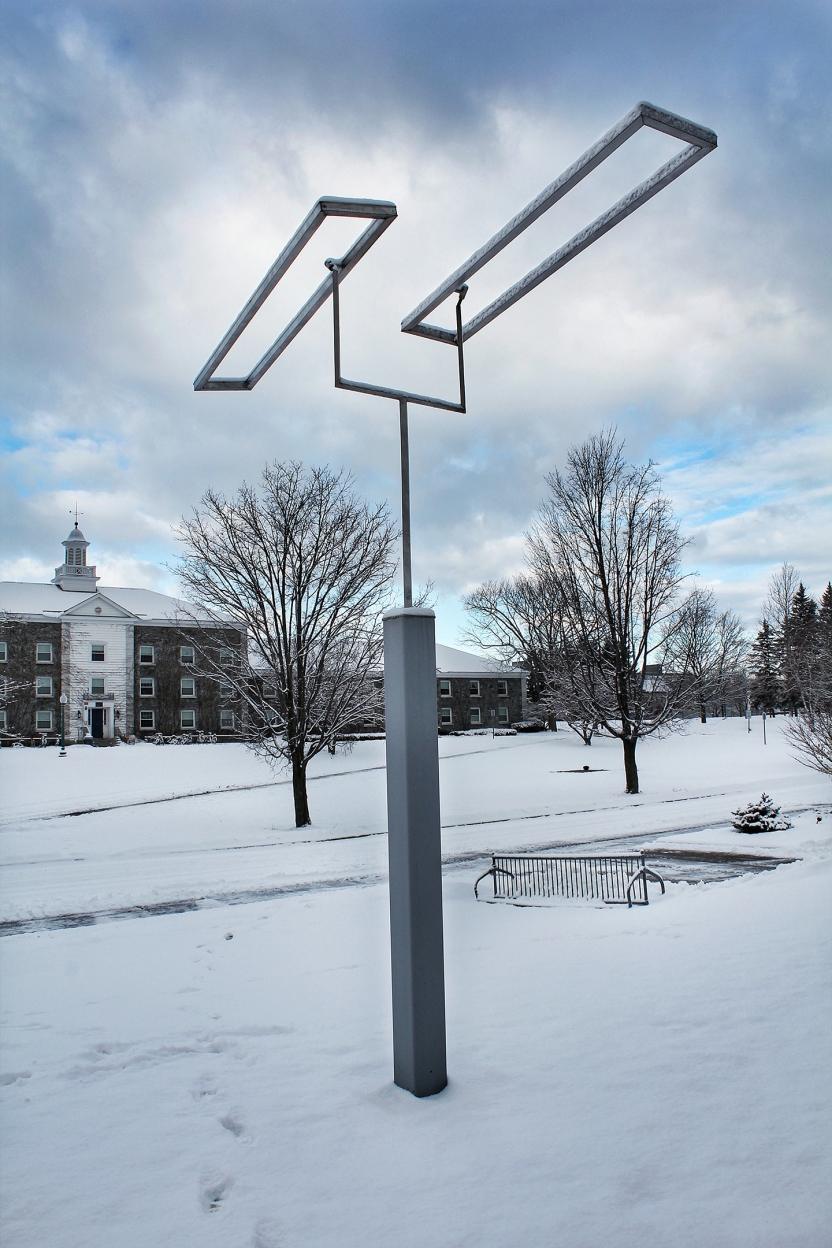George Rickey

George Rickey (American, 1907–2002)
Two Open Rectangles, Excentric, Variation VI, 1976
Stainless steel, 12 × 3 × 3 feet.
Collection of Middlebury College Museum of Art, Vermont. Purchase with funds provided by the Friends of Art Acquisition Fund and a matching grant from the National Endowment for the Arts, 1977.002. Copyright © George Rickey Estate, LLC / licensed by Artists Rights Society (ARS), New York.
Location: In front of Johnson Memorial Building
George Rickey’s kinetic sculptures do not use mechanical devices of any kind to create movement. Inspired by Alexander Calder’s mobiles, Rickey arranged the spare and geometric elements of his sculptures so that they are free to move with the surrounding air currents. These create random patterns of movement within tightly controlled parameters.
Two Open Rectangles, Excentric, Variation VI keeps the viewer in a state of constant suspense. The sculpture creates the impression that the two rectangles interpenetrate, even though they do not, and that they will collide, even though they cannot. Rickey’s work is neither gestural nor anthropomorphic. His interest lay in the moving object itself and the sculpture’s articulation of its environment.
